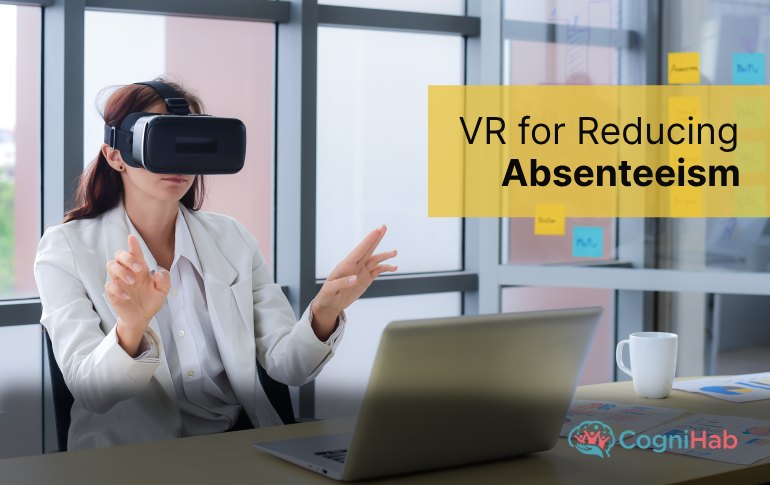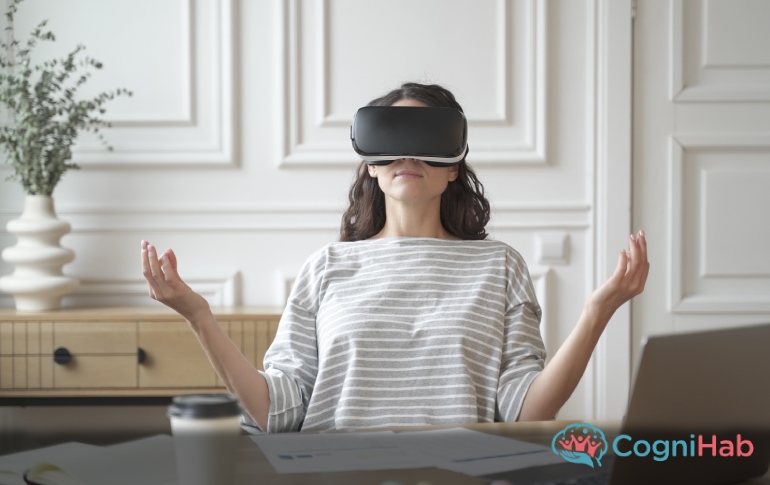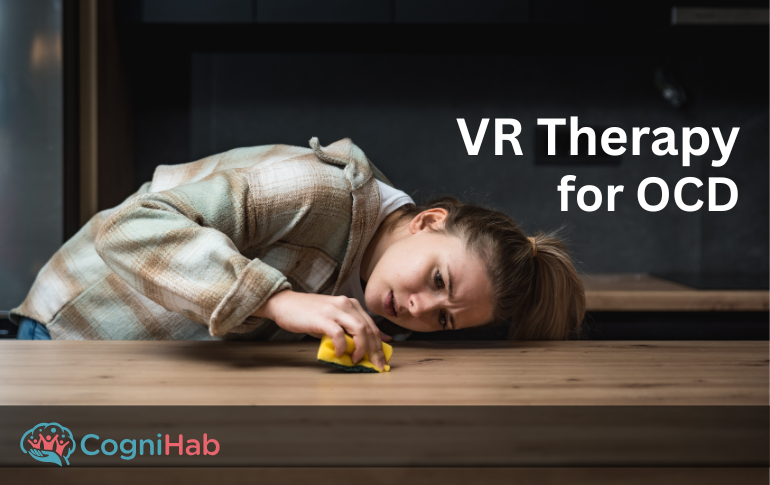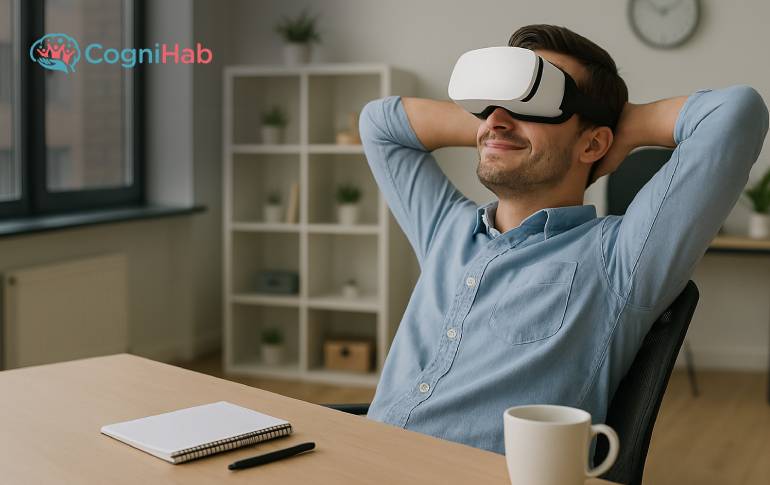VR for Reducing Absenteeism: How Virtual Reality Can Transform Workplace Attendance
Did you know that U.S. businesses lose more than $225 billion a year due to absenteeism?
Frequent unplanned employee absences disrupt productivity, and they drain revenues. Many traditional solutions focus on punishments and strict policies that approach has never completely worked well in corporate.
VR wellness is an almost magical tool for addressing absenteeism root causes like stress, disengagement, and physical strain.
Managing Workplace Absenteeism: Identifying Causes and Reducing Costs
Being absent from work isn't always about not wanting to be there; it's often the result of many workplace problems. Some of the most common causes of employee absenteeism mentioned below.
1. Burnout: It has become a significant problem for many workers. Those who endure chronic stress in the workplace often find themselves needing to take time off to recover and get better.
This exposure to strain not only affects their mental health but also leads to decreased productivity and diminished returns on their efforts
2. Lack of Engagement: When employees are bored with their work, they sometimes become more disengaged, which can obscure a problem that is often thought to be about a lack of motivation or even a disciplinary issue.
3. Poor Mental Health: It seems obvious, but many companies fail to effectively address this issue, employees often take unplanned time off due to anxiety or depression.
4. Physical Strain: An increasing number of employees are experiencing physical stress, often manifested in repetitive stress injuries, which undermine their work performance. When workers are in pain and are fatigued, it is unreasonable to expect that their dependability will not be affected.
5. Workplace Culture: When workers sense that their value is low and that they are not well associated with their organization, they are far more likely not to show up to work.
6. Work-Life Balance Issues: Employees often face situations that necessitate their absence from work due to personal obligations or responsibilities.
These obstacles can severely affect their general well-being and productivity, underscoring the significance of a work environment that is supportive and accommodating.
The Cost of Absenteeism
According to a Gallup report, absenteeism costs usa companies about $1,685 per employee each year, which is a large hit to productivity and employee morale. Most companies try to handle this by sending out warnings and imposing penalties, sometimes that make the employee frustrating. Instead, organizations can use virtual reality platforms to immerse employees in a new experience.
How VR Reduces Workplace Absenteeism: 5 Science-Backed Solutions
Immersive VR experience can increase job satisfaction and skills development, leading to more engaged employees who take fewer unplanned days off work.
1. Stress and Mental Health Management
Studies by Stanford University have shown that immersive virtual reality meditation applications can reduce workplace stress by almost 30 percent.
2. Gamified Engagement
PwC research has found that not only does VR training in and of itself lead to increased engagement among employees, but the very act of learning in a gamified manner leads to even greater increases in engagement.
3. Remote Work Flexibility
Remote Oculus employees will have greater flexibility in setting their work hours and, thus, more control over their work-life balance.
4. Physical Wellness Support
Common health issues that lead to workplace absences are primarily related to the following: Musculoskeletal injuries (hard to diagnose, often undetected until long after the employee has been injured), carpal tunnel syndrome, tendinitis, and issues related to posture and the way the employee's workstation is set up.
5. Social Connection and Team Building
Isolation drives absenteeism—VR solves this with shared virtual spaces, collaborative games, and interactive social experiences for stronger teams.
Also read, Exploring Virtual Reality for Relaxation
Creative Ways how VR can be used in Offices
From VR nature escapes to anxiety-busting simulations, offices are now deploying VR for Reducing Absenteeism to manage stress and keep teams present.
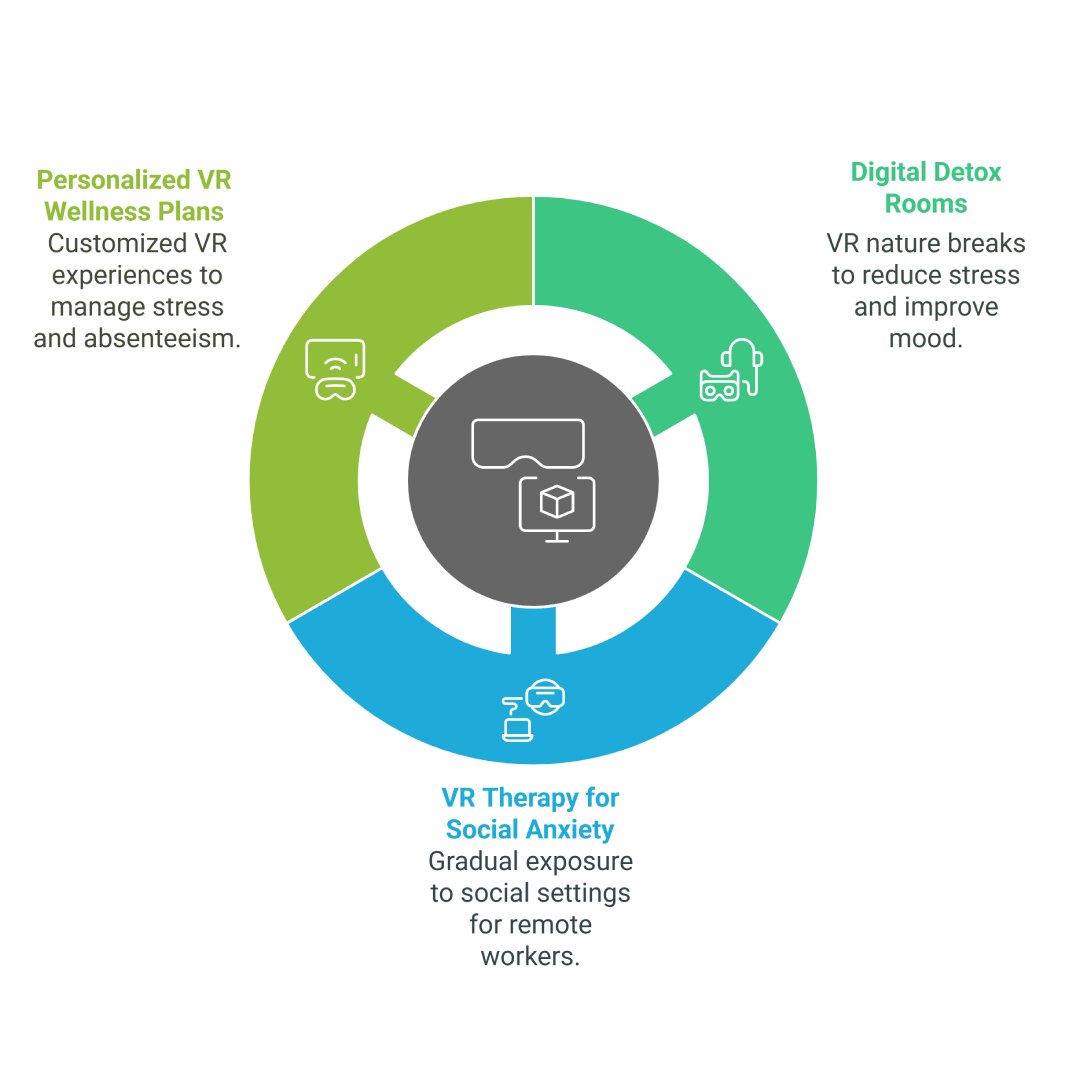
1. Digital Detox Rooms: Employees take 10-minute nature breaks in VR to reduce stress and mental fatigue. Biophilia is strong, and spending even a little time in a VR nature space can improve mood and productivity.
Nature is a brilliant antidote to many of the problems of modern life, and we can probably get a better view of nature with the help of virtual reality.
2. VR Therapy for Social Anxiety: Helps remote workers transition back to the office smoothly by gradually increasing exposure to social settings in a controlled environment.
3. Manage Absenteeism Through Personalized VR Wellness Plans: Wellness programs that use VR get an immersive experience for the individual.
Unlike nature, which can often trigger defensive reactions, the virtual environments of these programs can be customized to suit individual work styles, stress levels, and other personal factors that the program knows about the user. By helping manage mental stress, these programs might have the potential to reduce absenteeism.
Also read, Anxiety Disorder: Type, Causes, and Role of VR in Treatment
How AI-Enhanced VR Will Transform Employee Attendance
AI-enhanced VR is redefining employee attendance by addressing root causes like stress, disengagement, and burnout. These systems analyze work patterns in real-time to deliver personalized interventions—think VR meditation pods for pre-shift anxiety relief or AI-generated ‘motivation nudges’ during slumps.
Early adopters report 52% fewer unplanned absences (McKinsey 2024), as the technology doesn’t just track attendance but actively improves it through immersive well-being tools.
Unlike punitive measures, AI-VR creates a virtuous cycle where showing up feels rewarding, not obligatory.
AI and VR: Predictive analytics pinpoint burnout risks before employees miss work, giving HR teams a chance to put proactive solutions in place.
This could make physical absenteeism a thing of the past, as employees engage in a fully interactive digital work environment.
EAPs (Employee Assistance Programs) in a VR World: Companies are integrating virtual reality into their EAPs, allowing employees to participate in confidential and fully immersive mental health resource sessions.
Being able to utilize VR as a resource could put even more of an interactive spin on the stress management tools that companies are offering.
Steps to Deploy VR for Reducing Absenteeism
- Analyze absenteeism data to identify key causes (stress, injuries, etc.)
- Survey employees about their wellness needs
- Contact Cognihab for better help
- Select Cognihab's wellness programs
- Set up VR stations in accessible locations
- Train employees on basic VR headset use
- Track absenteeism rates before and after implementation
- Gather employee feedback about the VR experience
- Compare results to measure program effectiveness
- Integrate VR breaks into daily schedules
- Offer incentives for regular VR participation
- Continuously update content based on employee needs
- Share success metrics to encourage ongoing use
- Scale the program with additional headsets/content
Conclusion
Virtual reality isn't some distant futuristic concept, it is here today. Unlike programs that drive people toward attendance through surveillance, VR allows for hands-on, active participation in the workplace, creating environments people want to engage with, in turn boosting both well-being and productivity and reducing Absenteeism.
From relieving stress or allowing for remote collaboration, Cognihab vr solution has something to offer in seriously combating the problem of attendance. And the best part? Employees will look at it as anything but snooping.


